Blowing Holes in Seymour Hersh's Pipe Dream
On the surface Seymour Hersh's story looks passable, but as you dig deeper it has more holes than the Nord Stream pipeline.
If you enjoy my content, please consider supporting my work here and on Twitter with a premium Substack subscription.
Update #3 includes debunks of Norway’s claimed financial incentives, provides information on past BALTOPS mine detection and clearance exercises and my email correspondence with Seymour Hersh
Update #2 includes detailed data debunking the use of any Alta-class vessel in the operation
Updated to include information given by Seymour Hersh in interviews in the days following his original post.
I would like to preface this post by stating that I will not be making any conclusions on who is responsible for the Nord Stream pipeline explosions in this piece. While I have my suspects, all publicly available information regarding the explosions is circumstantial and there is none that conclusively points to a specific culprit. The purpose of this post is to debunk the claims made in Seymour Hersh’s Substack post titled “How America Took Out The Nord Stream Pipeline” using publicly available information.
In this post I do not take any stance on any of Seymour Hersh’s past articles or viewpoints, be they his Pulitzer Prize story in the 1970s and his recent work. This post will solely focus on the claims made in the recent Substack post.
Seymour Hersh’s recent Substack post claims to provide a highly detailed account of a covert US operation to destroy the Nord Stream pipelines in order to ensure that Russia would be unable to supply Germany with natural gas through them. All the information in Hersh’s post reportedly comes from a single unnamed source, who appears to have had direct access to every step of the planning and execution of this highly secretive operation.
When first reading through Hersh’s account of the events, the level of detail he provides could add credence to his story. Unfortunately for Hersh’s story, the high level of detail is also where the entire story begins to unravel and fall apart. It is often stated that people who lie have a tendency to add too much superfluous detail to their accounts. This attempt to “cover all bases” is in many cases what trips these people up. Extra details add extra points of reference that can be crosschecked and examined. In Hersh’s case, this is exactly what appears to have happened. On the surface level, the level of detail checks out to laymen or people without more niche knowledge of the subject matter mentioned. When you look closer though, the entire story begins to show massive glaring holes and specific details can be debunked.
Early in Hersh’s article, he states that the secrecy of mission to destroy the pipelines was the top priority of the Biden Administration. This he states is the reason why diver graduates from The Naval Diving and Salvage Training Center were chosen instead of SEALs or other SOCOM units. Doing this Hersh states would bypass reporting of the operation to members of Congress or the “Gang of Eight”. In Hersh’s initial story, it appears that every precaution is being taken to avoid any leaks or bringing any unnecessary actors in on the mission.
Already in the accounts of the early top-secret planning meetings between high level US military, CIA and Biden Administration officials, some of the proposals seemed more akin to Tom Clancy fan fiction than plausible suggestions. The US Air Force officials reportedly proposed “dropping bombs with delayed fuses that could be set off remotely”. One could write an entire post on the reasons why sounds entirely made up by someone with no real grasp of what that suggestion would actually technically entail.
During the supposed initial planning of this operation, from the way it is described by Hersh and his source, it appears that the CIA and entire interagency group were unaware of the fact that the Nord Stream pipelines were in fact pipelines.
Still, the interagency group was initially skeptical of the CIA’s enthusiasm for a covert deep-sea attack. There were too many unanswered questions. The waters of the Baltic Sea were heavily patrolled by the Russian navy, and there were no oil rigs that could be used as cover for a diving operation. Would the divers have to go to Estonia, right across the border from Russia’s natural gas loading docks, to train for the mission? “It would be a goat fuck,” the Agency was told.
I am unsure as to why all the intelligence officials in the initial planning meetings for the mission felt that the only possible way to sabotage the pipeline would be at the short section directly bordering Russia, instead of the large section in more favorable waters.
As the operation commences, Hersh states that Norway was chosen as the obvious partner. This entails bringing the Norwegian Navy and Secret Service in on the details of the mission, as they will play a key part in carrying out the operation. This is the same mission where Biden still holds secrecy as the top priority and does not want the “Gang of Eight” or members of Congress to catch wind of the plan for fear of leaks.
During his introduction of Norway, Hersh makes a very strange remark about NATO General Secretary Jens Stoltenberg implying that he has worked directly with the US intelligence community since the Vietnam War. Jens Stoltenberg was born March 16th 1959. The US involvement in the Vietnam War ended April 30th 1975, meaning Jens had just turned 16 when Saigon fell to the PAVN troops. I doubt Jens Stoltenberg was a US intelligence asset in his early teens.
He was a hardliner on all things Putin and Russia who had cooperated with the American intelligence community since the Vietnam War. He has been trusted completely since. “He is the glove that fits the American hand,” the source said.
Hersh states that one of Norway’s main motivations is financial, “The destruction of Nord Stream—if the Americans could pull it off—would allow Norway to sell vastly more of its own natural gas to Europe.)” Norwegian gas production has remain steady since the destruction of Nord Stream.
Some have also claimed that it was done to increase the profit at the same volume due to price increases. As can be seen below, the price has fallen significantly since the destruction of Nord Stream
As Hersh’s article begins to move into the detailed account of the supposed operation, this is where the factually incorrect statements that can be crosschecked begin to appear.
Hersh claims that the Norwegian navy had the idea of using the annual BALTOPS exercise as the cover for the operation to plant the explosive charges on the pipelines. He then claims that the Americans had “convinced the Sixth Fleet planners to add a research and development exercise to the program” where the “at-sea event would be held off the coast of Bornholm Island and involve NATO teams of divers planting mines, with competing teams using the latest underwater technology to find and destroy them.”
There are multiple problems with this statement. Firstly, mine clearing has long been a staple of the BALTOPS exercises. Even the specific part of the exercise involving experimental technology to find and destroy the mines had been a priority of BALTOPS for many years. The image below is from that event during BALTOPS 2019.
Here is a comparison of the Bornholm mine detection and EOD part of BALTOPS22 and BALTOPS20 two years earlier. This is the brand new part of the exercise that Hersh claims the CIA added to provide cover for the planting of the explosives on Nord Stream. As can be seen on the AIS tracks below, the exercise has always taken place in approximately the same locations around Bornholm.
Secondly, the people behind this highly secret operation that could not afford leaks had now somehow convinced the BALTOPS planners to change the parameters of their exercise which would have been planned far in advance of the exercise taking place. All of this either without informing them of why or by adding more people to the loop that could leak the plans.
”Nord Stream 1 and 2, each with two sets of pipelines, were separated much of the way by little more than a mile as they made their run to the port of Greifswald in the far northeast of Germany.
The Norwegian navy was quick to find the right spot, in the shallow waters of the Baltic sea a few miles off Denmark’s Bornholm Island. The pipelines ran more than a mile apart along a seafloor that was only 260 feet deep.”
The next major question mark comes after this description by Hersh of how the Norwegian navy found the “right spot” to sabotage the pipeline. It makes it sound like the explosions all took place in close vicinity of each other. There was in fact 6.17km between the site of the two blasts that caused the two leaks in the Nord Stream 1 pipeline. The third blast which caused the leak in the Nord Stream 2 pipeline was 80km away from Nord Stream 1 blasts.
In an interview on the Americano podcast, Hersh has claimed that: "We needed the Norwegians because the Baltic Sea is a complicated sea, it is deep, to put mines in, so they found us the most shallow part of the sea."
Ignoring the fact that America apparently has no access to bathymetric charts, the Nord Stream 1 blasts took place at what was one of the deepest parts in the area.
Immediately after this Hersh begins to mention some of the details of the diving aspect of the operation. He starts of by mentioning that the divers would deploy off a “a Norwegian Alta class mine hunter”. No Alta-class minesweepers took part in BALTOPS22. One Oksøy-Class mine hunter, the Hinnøy, did take part in the exercises though. The two classes of ship are very similar, though not identical.
While this ship took part in the exercise, its positioning during the time period does not match what would be expected of a ship supporting deep sea divers.
Joe Galvin used open source AIS data to track the Hinnøy during BALTOPS22 and as we can see from the map in his tweet, the movements of the Hinnøy are not consistent with three lengthy dives at the locations of the three seperate blasts.



Here I have marked the locations of the Nord Stream leaks on top of the map of the Hinnøy’s movement during BALTOPS22 that Joe Gavin posted. Note the even at its closest, the Hinnøy is several km from the leak locations. At the location of the two leaks in Nord Stream 1, the Hinnøy never even slows down significantly.
From the available information I can find, I have found no evidence that the Oksøy-Class can support surface-supplied mixed gas diving. This means that the divers would have been required to use electronically controlled closed-circuit underwater breathing apparatus (EC-UBA) for their dives. In his article Hersh states that the divers would “dive with a mixture of oxygen, nitrogen and helium streaming from their tanks”. In the US Navy Diving Manual dives to the depths required for the sabotage of the pipelines are to be done using a HeO2 (Heliox) mix. The manual also features table showing the decompression times for divers during the ascent for dives to this depth.
For a dive of 260 FSW, assuming that the work to place the charges took somewhere between 15 and 30 mins, the total ascent time for the divers would be between 53 and 195 minutes. So for each dive we are looking at a dive time of between an hour and a half to four hours to complete the planting of the charges on the pipeline. Additionally as the three explosive locations were all miles apart, they would require at least 3 separate dives to accomplish the mission.
According to Hersh’s source, at some point the Americans and Norwegians decided to brief senior officials in Denmark and Sweden “in general terms about possible diving activity in the area”. This I do not in anyway understand. Either the same insulated highly secretive operation that must not have any leaks is now bringing further outside actors into the fold or this means that they were just briefed that dives would be taking place. If it was the latter, then why brief them on diving activity when they had supposedly already orchestrated the entire mine clearing part of BALTOPS22 as an excuse for the diving activity.
Then Hersh goes on to speak absolute nonsense about the US having to “camouflage” the explosives from the Russians by adapting their salinity to that of the water. This is complete and utter drivel that makes no sense at all. Russia is not conducting minesweeping operations in the Danish and Swedish EEZ. Even if they were, they are not going to detect what Hersh himself described as a shaped charge placed on the pipeline. The salinity aspect is just random buzzwords.
The Russian navy was known to possess surveillance technology capable of spotting, and triggering, underwater mines. The American explosive devices needed to be camouflaged in a way that would make them appear to the Russian system as part of the natural background—something that required adapting to the specific salinity of the water. The Norwegians had a fix.
Hersh later states that the charges would be detonated by a “sonar bouy” (sonobouy) dropped as a “Norwegian Navy P8 surveillance plane made a seemingly routine flight”. Many problems with this, firstly the Norwegian P-8s are operated by the Norwegian Air Force. Secondly, while they have been delivered per the link he used as a source earlier, this link forgets to mention that they won’t enter into active service until later this year. Here I assume that Hersh thought they were in service as they had been delivered and then proceeded to add this detail to his story, without knowing that they were not yet in service. There would be nothing “seemingly routine” about a Norwegian P-8 dropping sonobouys just off the coast of Bornholm.
There were a few routine Norwegian Air Force P-8 training flights in the week leading up to the blasts. These flights though all focused on the Northern part of Norway where the P-8 is scheduled to operate. Two flights were flown on September 20th from the P-8’s base at Evenes Air Station by two seperate P-8s. Both flights however were focused around training landings at the airports surrounding Evenes Air Station. None of the flights were within 1000km+ of Bornholm.
Again on September 22nd there were two routine Norwegian Air Force P-8 training flights. This time one flew a similar path as on the 20th, while the other aircraft trained a series of landings at airports along the Western coast of Norway. Again neither aircraft was anywhere near Bornholm and the sites of the explosions.
Open Source ADS-B Exchange information also does not show any Norwegian P-8 activity on September 26th. While it is possible for aircraft to operate without showing up on ADS-B Exchange, it would make little sense in this case as Hersh states it was meant to look like a “seemingly routine flight”. The location is also far away from anything that could ever be considered a “seemingly routine flight” by Norwegian Air Force P-8s. These aircraft have never operated near Bornholm. The timeline for this also does not match up, as Hersh states after the P-8 dropped the sonobouy, “A few hours later, the high-powered C4 explosives were triggered and three of the four pipelines were put out of commission.” The first explosion was recorded at 02:03 local time, meaning that there was no way for the flight to be on the 26th as he stated while there also being a few hour delay on the explosives.
There was one P-8 Poseidon aircraft in the vicinity of the Bornholm around the time of the explosions. This was a US Navy P-8, not Norwegian Air Force P-8. Again though the timeline does not match what Hersh described. The P-8 passed over the area of the Nord Stream 2 leak almost exactly one hour after explosion took place. The explosion happened at 02:03 CEST, while the P-8 flew over at 03:10 CEST. It would later return an circle the area several hours after the explosions took place.
The use of an American P-8 would also contradict the build up to Hersh’s entire story, where the premise is that Biden specifically used Norwegian military assets instead of US assets to avoid leaks to Congress and the Gang of Eight.
Hersh then goes onto a long rant about how they had to be careful that a random underwater noise did not trigger the explosives, which again makes little sense. This isn’t the 1960’s with phone phreaks getting free long distance calls using cereal box whistles. The use of underwater acoustic control systems have long been a staple of the offshore oil industry (Thanks Jonas Kofod). Acoustically controlled Blow Out Preventers are in use in their thousands around the world. These receive acoustic control signals produced by a dunking transducer unit and open or close the hydraulic control values based on these signals. These operate for years at a time with no risk of “random underwater noise” triggering them. Additionally the Acoustic Command Unit and Dunking Transducer Unit used to control them up to depths of 5000m are small enough to be carried by a single person. There was absolutely no need to make use of a P-8 deploying a sonobouy to activate the explosives.
Due to the exceptionally high level of secrecy for this operation, one could also ask why the US chose to involve the Norwegian Navy it at all. As the dives were supposedly performed using EC-UBA gear, any ship could have been used and a civilian vessel would have be much more covert and not needed the cover of BALTOPS22. The same question can be asked about the Norwegian Air Force. According to Hersh, they were used to drop a sonobouy from the P-8 Poseidon to detonate the explosives. Why even use an aircraft for this? A sonobouy could be also be deployed by a ship which again is much more covert.
Seymour Hersh’s story would have been a lot harder to pull apart, had he decided to be more sparing with the details instead of going into depth with meaningless details that make little sense. A simpler story could have been believable, but this piece of Tom Clancy fan fiction is subpar.
Finally, through this entire detailed account there is one key thing Seymour Hersh neglects to mention or provide reasoning for. If Biden launched this operation with the express purpose of destroying Russia’s ability to supply Germany with natural gas, why only blow up three of the four Nord Stream pipelines? Why leave one of the two Nord Stream 2 pipelines intact, when they were the ones that Russia was able to open up at a moments notice.
UPDATE:
In an interview with Democracy Now!, Hersh is asked about the ship he claims was used and the denial by the Norwegian government that it was present. After a detour where he talks about Nicaragua, Hersh states “It was called the Alta, the ship was there. I mean that is just such a stupid lie.” Hersh doubles down on the statements from his original article.
The last time the Alta actively moved under its own power and used its AIS (Automatic identification system) was on 9th November 2012 at 09:24 UTC when she docked at Haakonsvern Naval Base for the last time. Here she was moored until 29th June 2022.
On the 29th June 2022, she was towed to Norscrap West AS, along with the Oksøy-class M341 Karmøy to be scrapped. The ships were picked up from Haakonsvern Naval Base by the tugs KNM Mjolner (MMSI: 259047000) and Sleipner (MMSI: 259046000) and towed the 14km north to Norscrap West AS early on the 29th June 2022.

They arrived at Norscrap West AS a few hours after they left Haakonsvern Naval Base and the process of scrapping the ships began. On the below Sentinel 2 imagery you can see the ships on the 30th June, after having arrived the day prior. On the 22nd July the two ships are still visible at the same location. The day after on 23rd July, ship photographer Alf Kåre Aasebø would photograph the two ships at Norscrap AS.
If we argue that Hersh misspoke and means one of the other ships in the Alta or similar Oksøy class, we need to also look at those. Only 2 Oksøy-class ships and 2 Alta-class ships are in service with the Norwegian Navy. These are the Oksøy-class ships the KNM "Måløy" and KNM "Hinnøy", as well as the two Alta-class ship the KNM "Otra" and KNM "Rauma".
Each of these ships can be accounted for during the period of BALTOPS22.
KNM Hinnøy:
The KNM Hinnøy took part in BALTOPS22. Its AIS tracks for the period of the exercise though show that the KNM Hinnøy was never in immediate vicinity of the sites of the Nord Stream pipeline explosions. The long track without course changes next to the two NS1 leaks is consistent with the ships reported speed. There are 62 minutes and 8.6 nautical miles between the two course changes. The tracks are also very consistent with no periods where the ship is “out of contact”. No evidence of any abnormal AIS activity or “spoofing”.
Available satellite imagery has been able to corroborate parts of the KNM Hinnøys AIS track, which further reduces the chance that there has been any “spoofing”. At 6 locations during the BALTOPS22 exercise, a ship matching the dimensions of the KNM Hinnøy was pictured by satellite imagery in the exact location where AIS data showed the KNM Hinnøy was. There is no evidence that “spoofing” of the AIS data was used at any time during BALTOPS22.
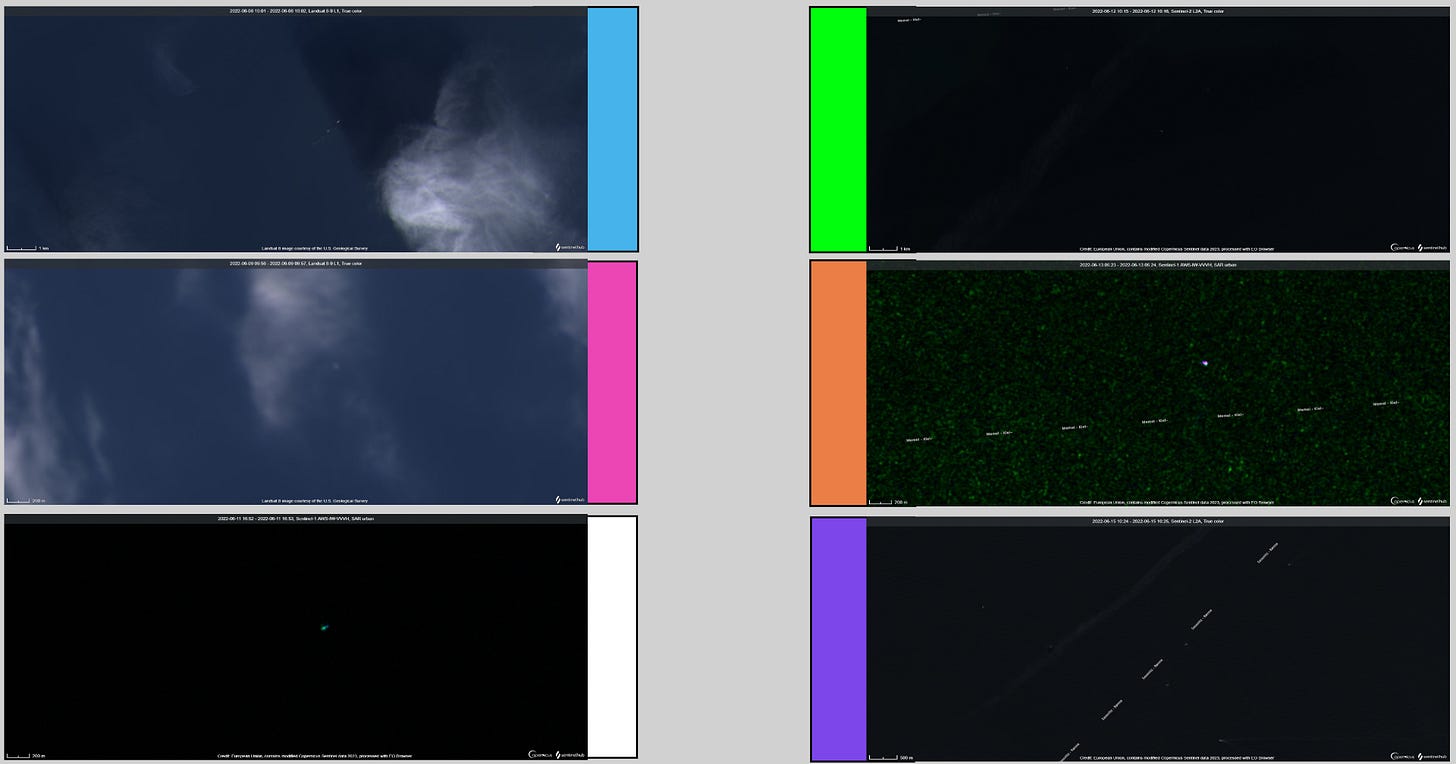
The distance between the two KNM Hinnøy AIS course changes by the Nord Stream 1 leaks is 8.6 nautical miles, the time between the points is 62 minutes. A trip out over the two leak locations would and down to the next AIS course change would be 17.1 nautical miles, which would need to be covered in 62 minutes, including the dive times.
At this time the KNM Hinnøy was traveling in formation with 3 other NATO warships and 1 non-NATO warship, the Estonian EML Sakala (M314), the Finnish MHC Purunpää, the Swedish HSwMS Vinga (M75) and the Dutch HNMLS Willemstad. These ships likely would have noticed if the KMN Hinnøy had shut off AIS and then left the formation at full speed towards the location the Nord Stream 1 leaks.

The KMN Hinnøy remained in the same formation with the other NATO ships as it passed the location of the Nord Stream 2 leak. Here the Hinnøy would have only had 29 minutes to sail 20 nautical miles, including dive times, in order to return to the location of the next AIS course changes.

On 14th June the KMN Hinnøy spent some time approximately 9 nautical miles north of the Nord Stream 2 leak as part of the exercise. Again the KMN Hinnøy spent the entire time in close proximity to the other vessels that were part of the exercise.

KNM Måløy:
The KNM Måløy only traveled a few short trips around Bergen during the month of June 2022. No trips where made anywhere near Bornholm.
KNM Otra:
The KNM Otra only traveled from near Flåm to Haakonsvern Naval Base during the month of June 2022. No trips where made anywhere near Bornholm.
The satellite imagery that is available where the location and time of the ships coincided with a satellite pass and clear skies is consistent with the AIS data. All evidence points to there not having been any AIS spoofing and the ships actually being at the same positions as AIS data suggests.
KMN Rauma:
The KMN Rauma spent the entirety of the BALTOPS22 exercise timeframe undergoing maintenance at Umoe Mandal. She arrived at the facility on 31st January 2022 at 07:30 UTC after having departed Haakonsvern Naval Base the day prior. She remained here until 19th October 2022 when she left the facility 14:12 UTC.
The above data means that every single Alta or Oksøy class ship in the Norwegian Navy was accounted for during BALTOPS22, with none of them being in a position to have placed the explosives on the Nord Stream pipeline as claimed by Hersh.
Hersh has since replied to my emails linked below. Make of them what you will.


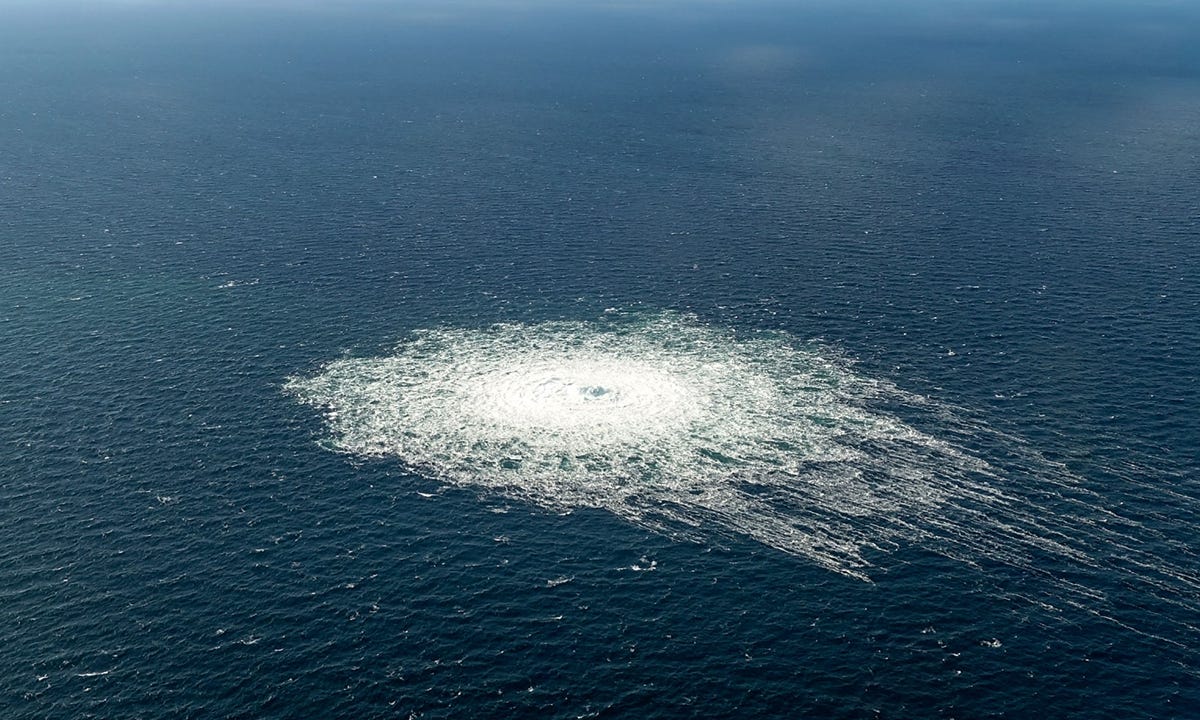

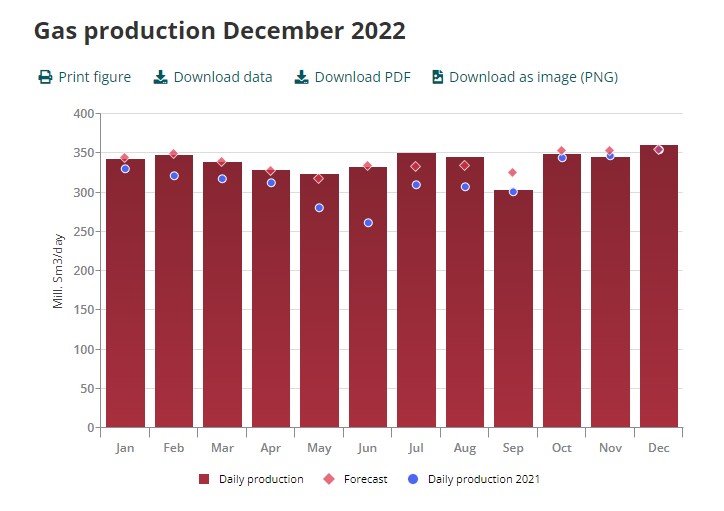
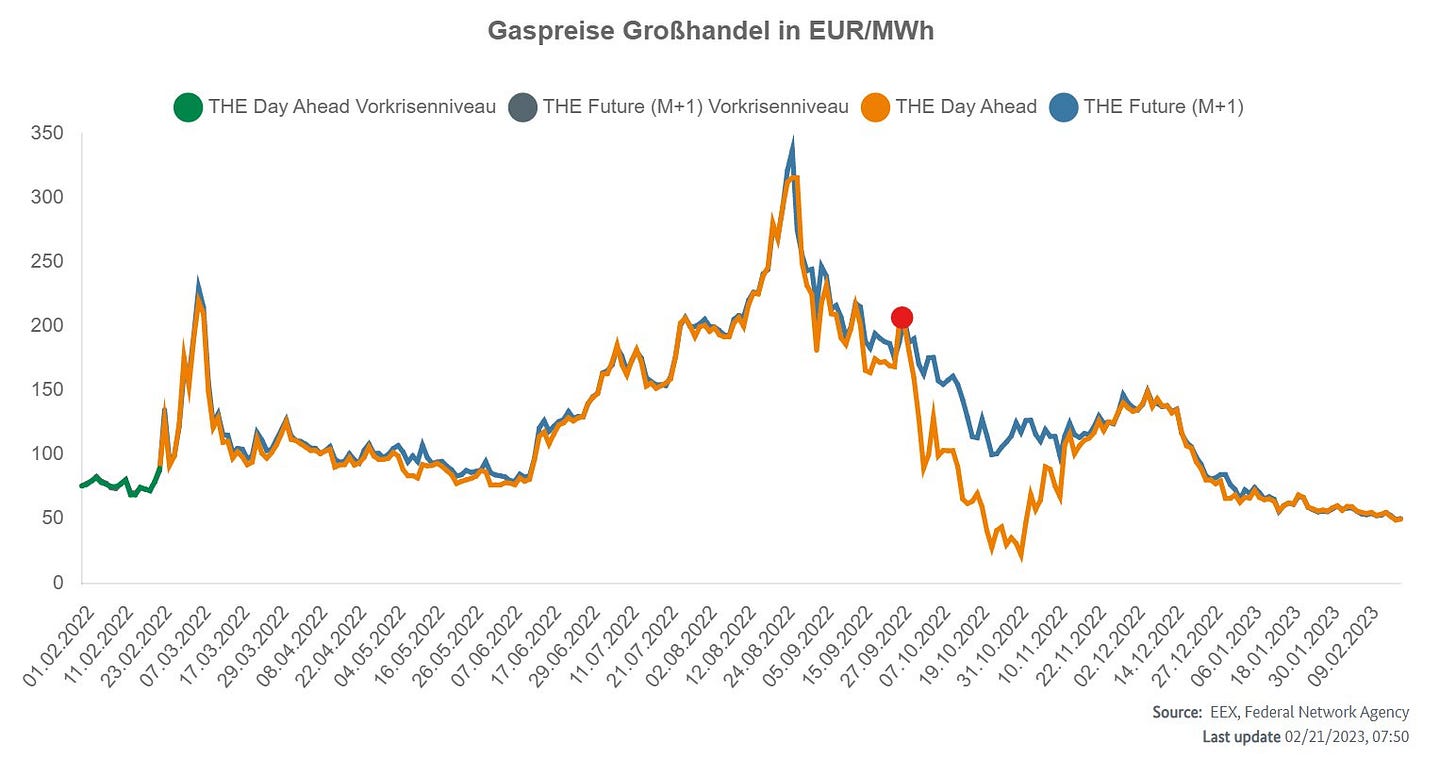
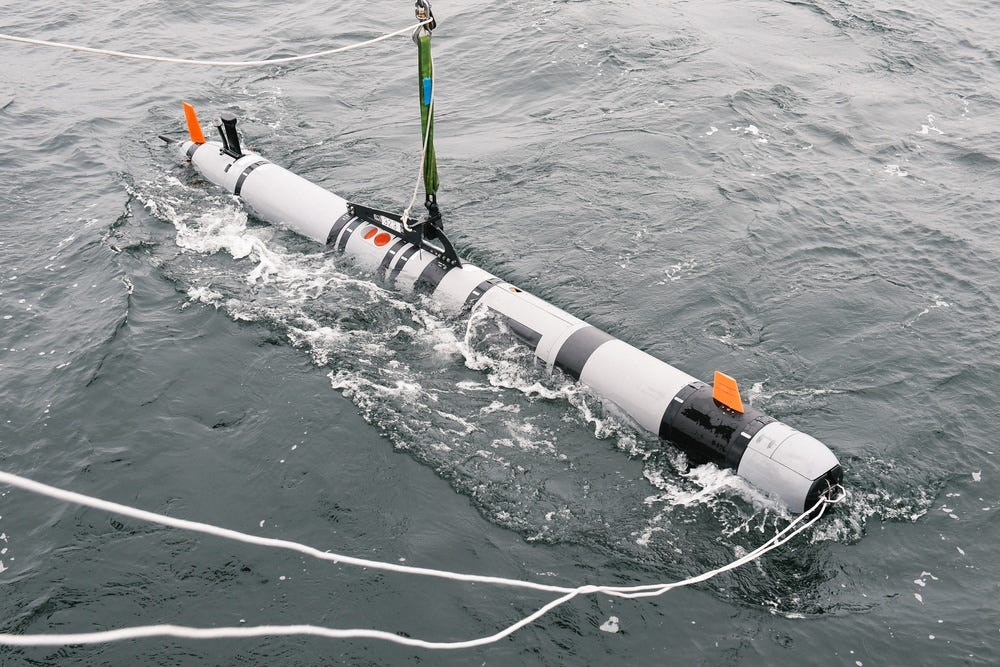
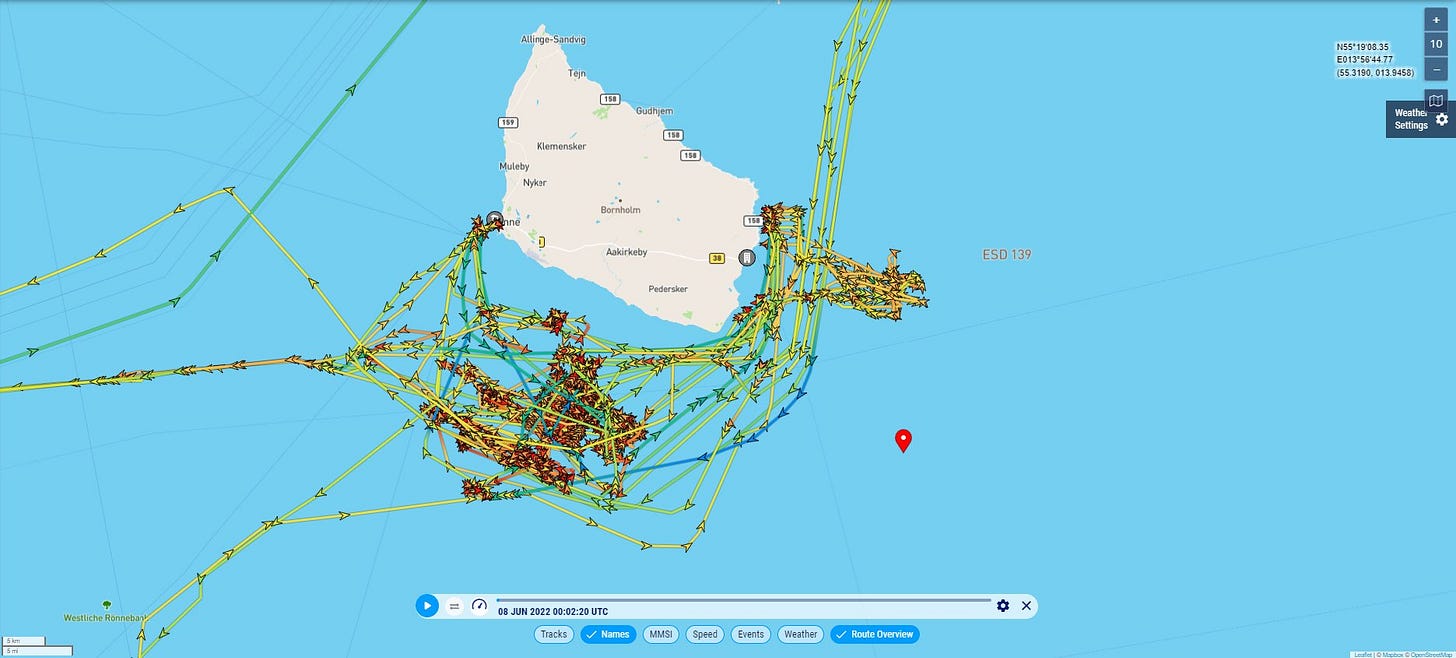
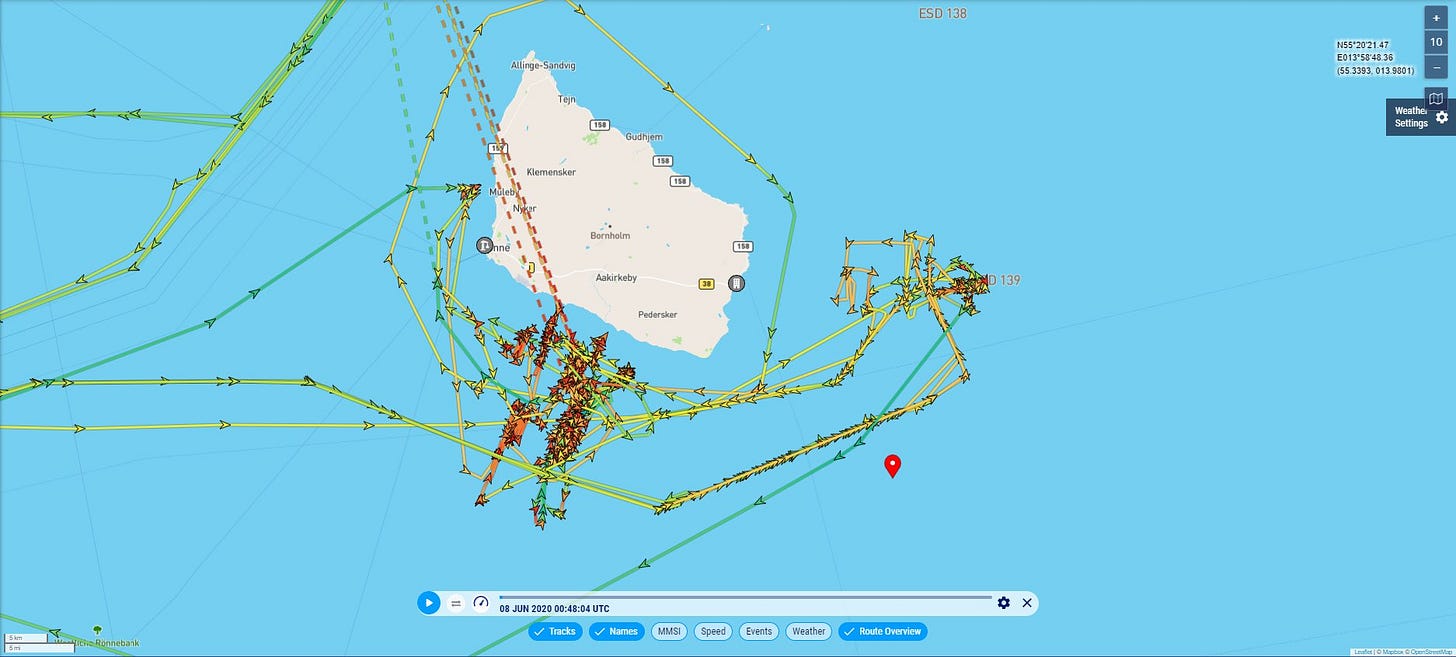

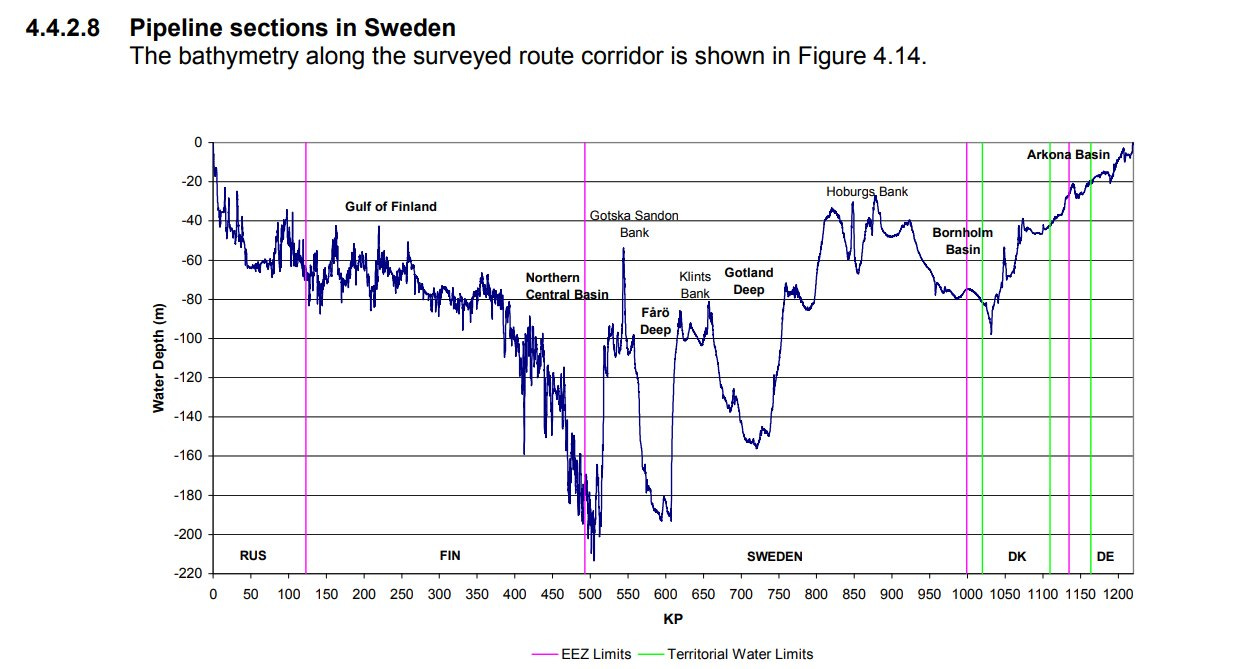
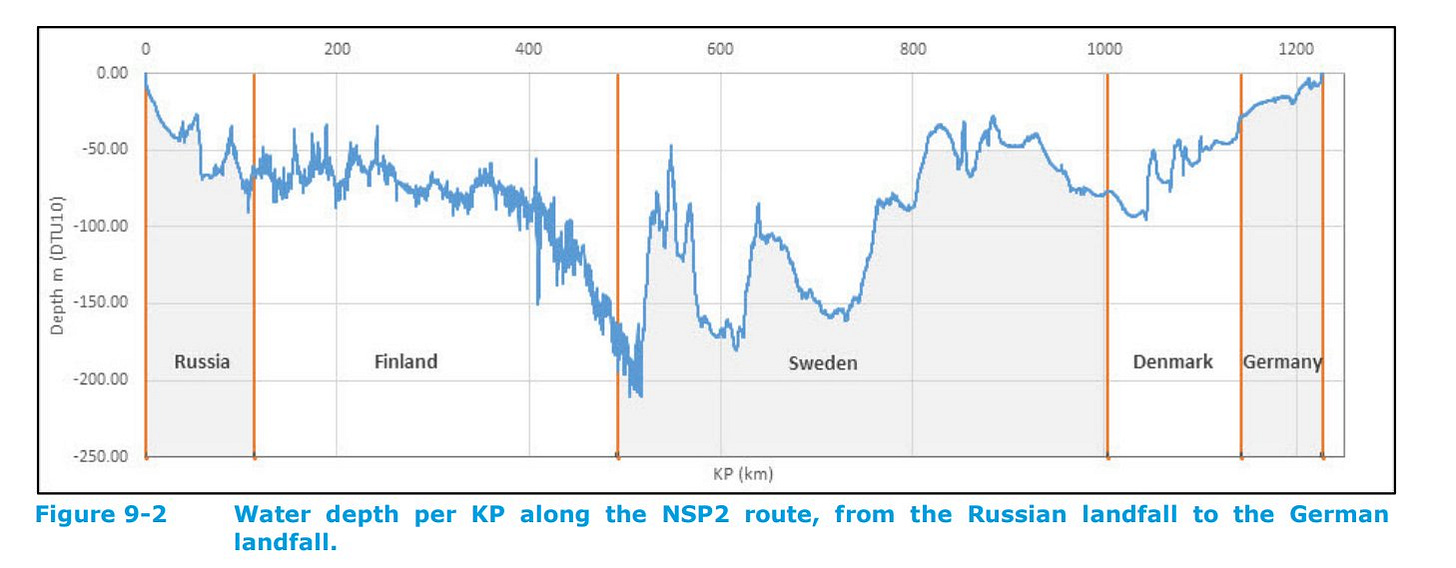






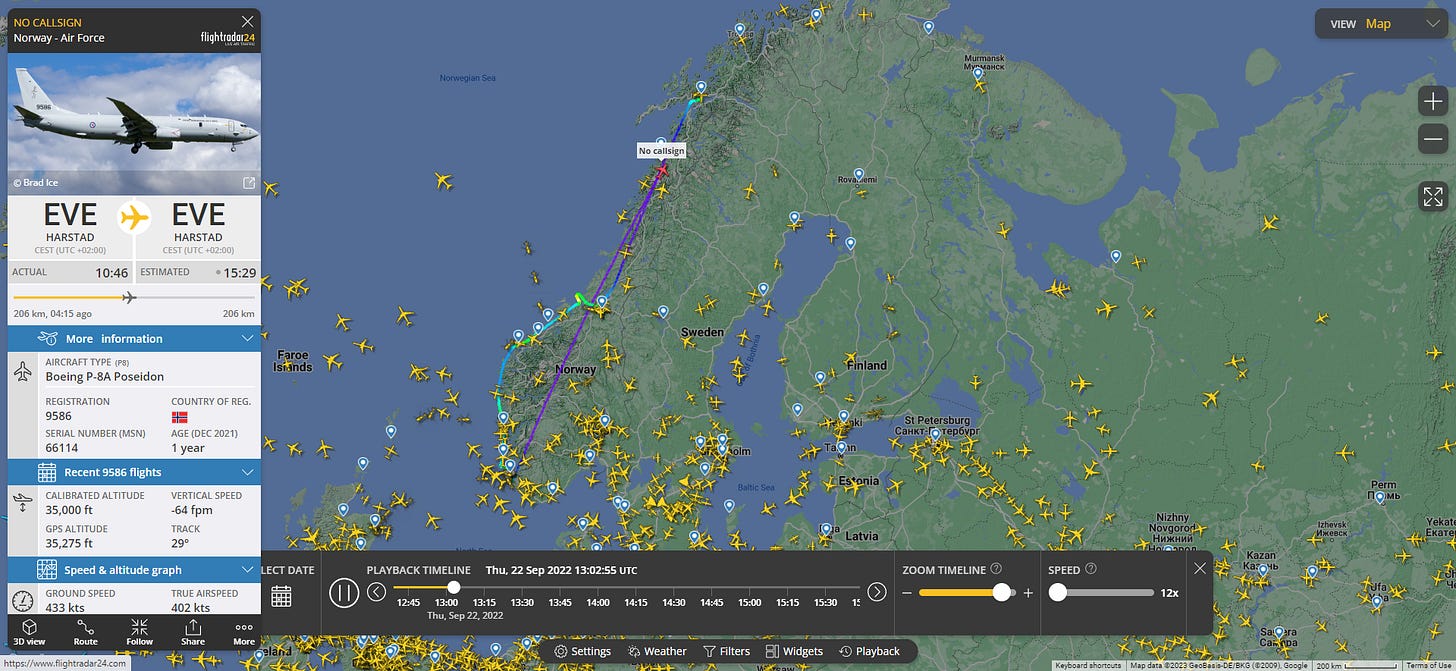

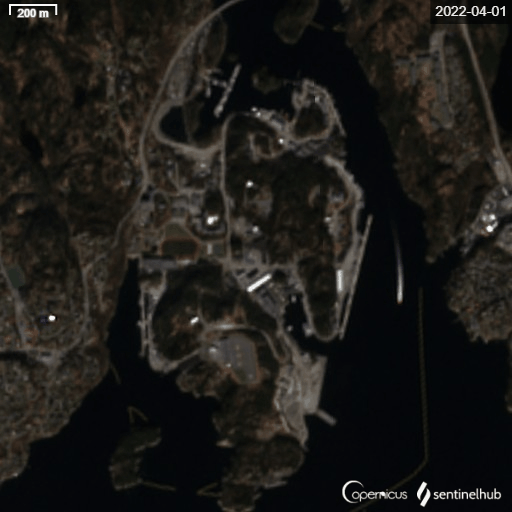
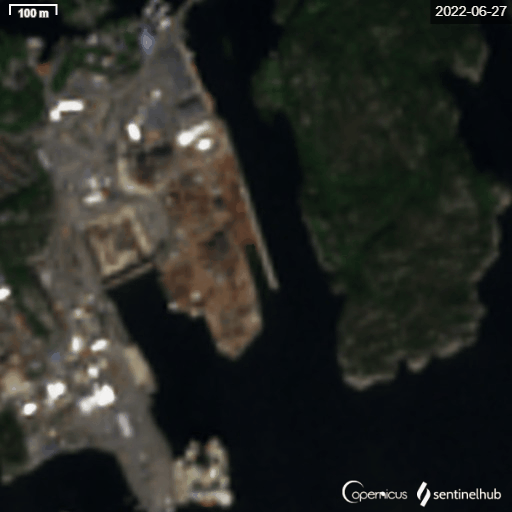
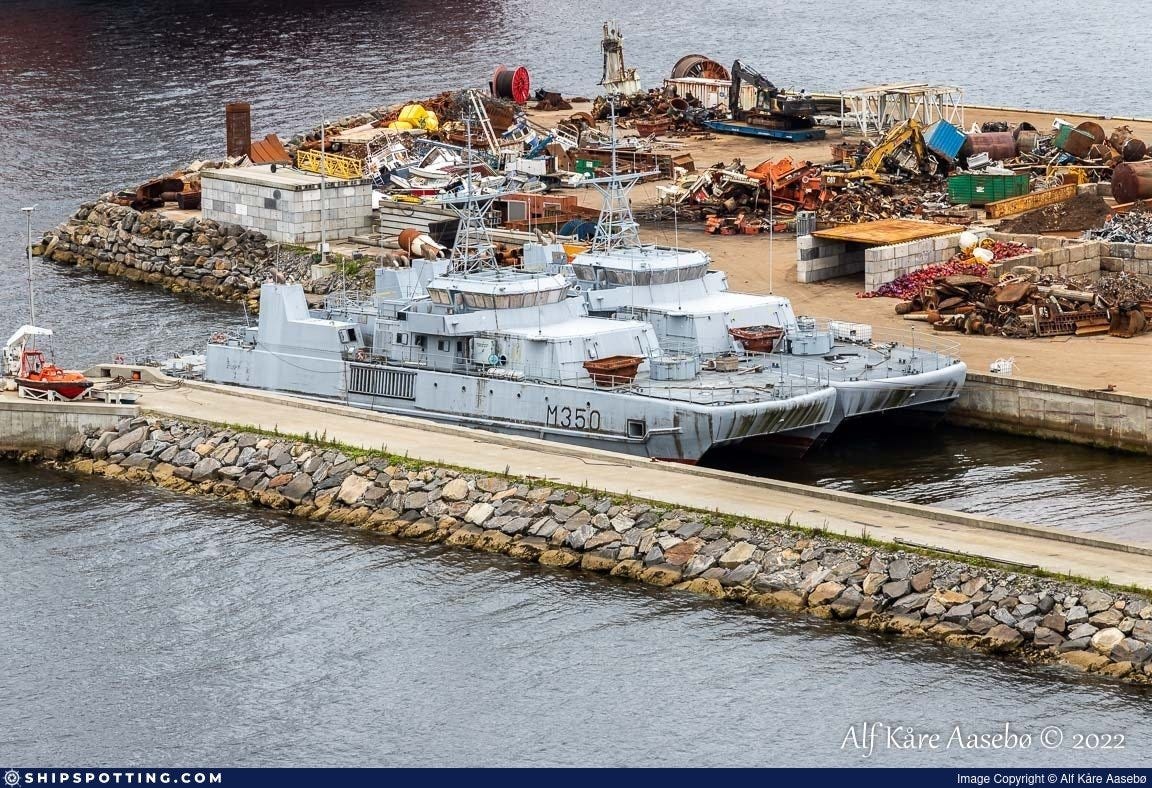

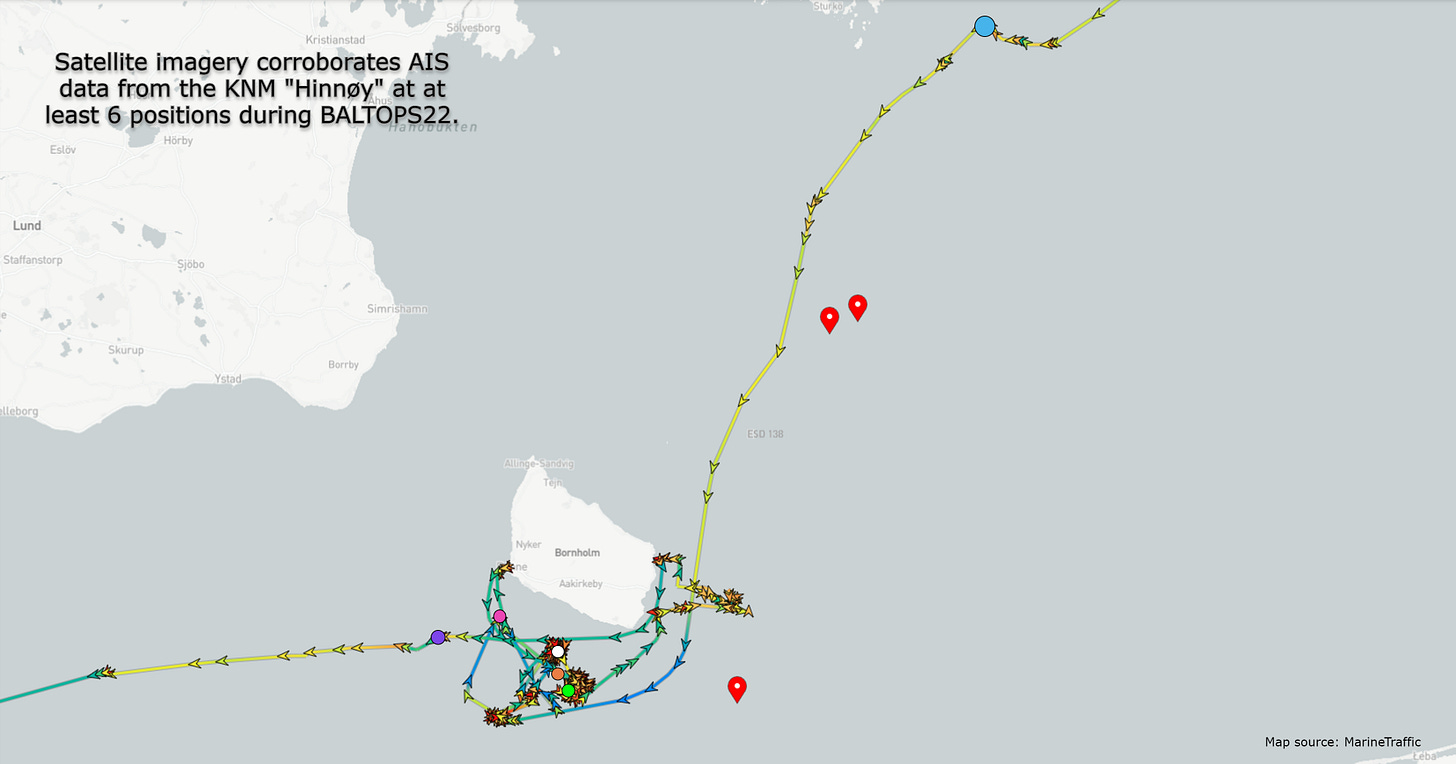




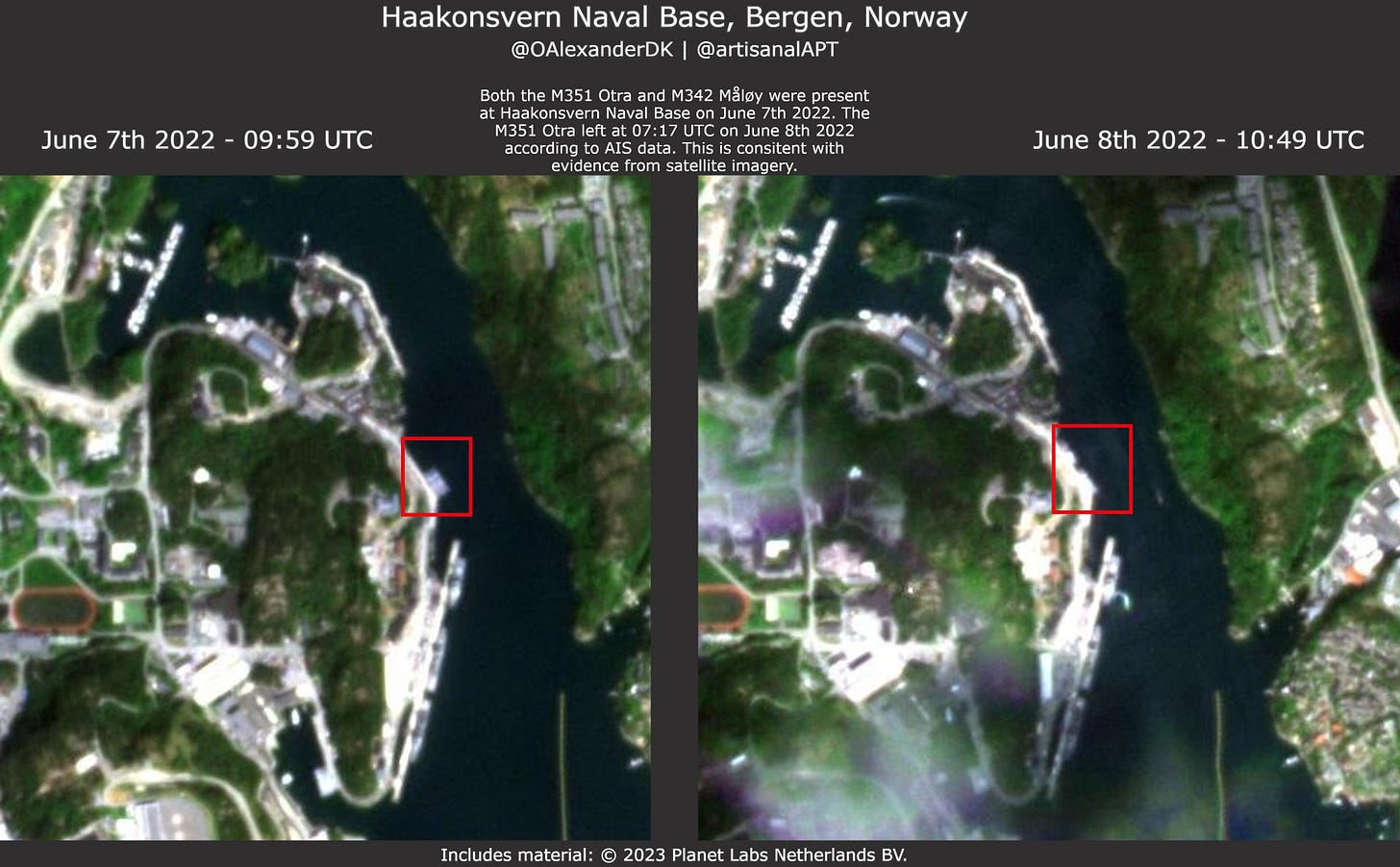

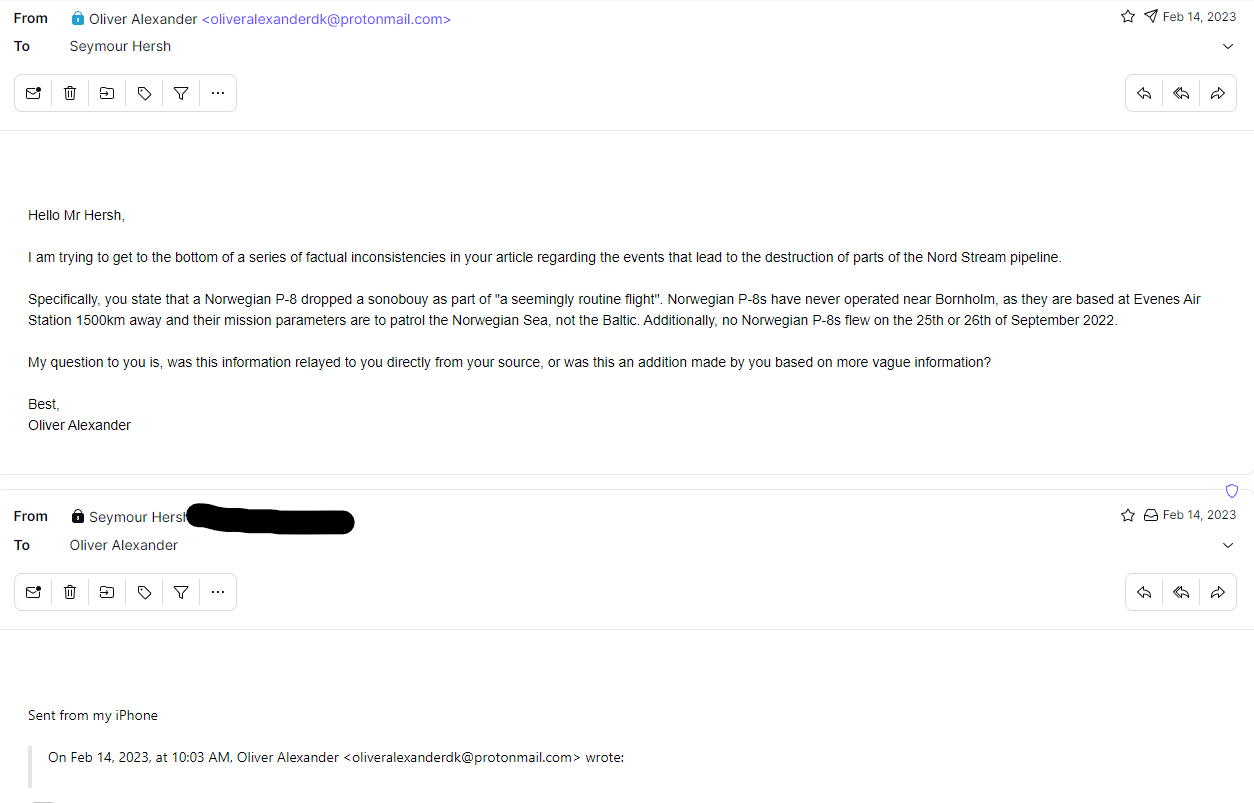








Blowing Holes in Oliver Alexander’s story on Seymour Hersh’s article:
As to relying on Elliot Higgins of Bellingcat for a correct takes on Hersh’s Syria gas attacks & the Skripal poisonings, I only refer to Hersh’s retort, "I can’t be worried about a Bellingcat - with its associations with certain intelligence agencies - is saying about me."
If one had any familiarity with Hersh’s investigative methodology, one would know that he doesn’t write articles based on a “single unnamed source.” What he does - especially considering the nature of his sources, many higher-up insiders, is protect his sources. So other sources, who don’t want to be named or can’t afford to be named - especially since the Obama Adm started the US going after any nat sec whistleblower for prosecution - do not get even an unnamed mention by Hersh. Does this method work? How many times has Hersh’s stories been proven right? How many major stories has Oliver broken?
Hersh did not state that using the Panama City divers, rather than the SEALS or SOCOM units, “would bypass reporting of the operation to members of Congress ….” He only reported that his source said that is what the planners of the mission thought. How many times in the past have nat sec apparatchiks believed they had deniable plausibility or a justification for a twisted interpretation of the rules or laws, and then it turned out those rationalizations didn’t hold up? Alexander doesn’t know one way or the other what the planners thought.
As for how crazy initial proposals may sound once subject to more thorough technical examination, does anyone need to be reminded of how many hundreds of crazy intel ideas have surfaced in the past that even Tom Clancy wouldn’t have come up with?
That Hersh's and his source's description of the operation implies that "the CIA and entire interagency group were unaware of the fact that the NordStream pipelines were in fact pipelines” is only Alexander’s opinion. That the Norwegians were chosen as a partner, despite the high risk to the Norwegians, indicates the planners knew they were dealing with pipelines. In fact, Hersh in an interview says if anyone wants to unpack the story, starting with people in the pipeline business would be a good place to start. Hmmm, I wonder if Hersh did that? It also explains why the Norwegians had to be brought into the project. After all, Norway is the most loyal of US/NATO allies and has the competency. The US has relied on Norway for numerous other top secret projects in the past, which usually end up leaked by the Americans, not the Norwegians.
That Hersh was not fully accurate about Generalissimo Stoltenberg is a trivial error. Yes, Jens was only a teenager protesting the Vietnam war with his older sister’s friends during the war (well documented in Norwegian media), but he also turned out to be a committed proponent of NATO as leader of the Social Democrat’s (AP) Youth Organization, despite claiming otherwise on his way to election to that position. He managed almost single-handedly to maneuver an overturn of the Youth orgs long-standing position of “Norway out of NATO." Always willing to please the party Elders, they fast-tracked him to move up and take over leadership of the Party. Hersh was also incorrect to write that Jens was anti-communist. Politically he was not ideologically committed, just an ambitious son of the Party, and he recognized fully supporting NATO as a necessary ticket to advancement. In fact, he was the first Norwegian PM to move Norway towards complete loyalty and subservience to the Americans. US intelligence did and does completely trust him.
There is nothing in the way BALTOPS 22 was described by the US Navy and sector trade magazines and Hersh’s article which are fundamentally inconsistent:
https://seapowermagazine.org/baltops-22-a-perfect-opportunity-for-research-and-resting-new-technology/
That Alexander tries to make something of this is honestly laughable. Without knowing whom within the Sixth Fleet and STRIKFORNATO command were informed of the requested changes, it is impossible to infer to what extent more people were brought into the loop.
Moreover, that Hersh "makes it sound like the explosions all took place in close vicinity of each other” is just an interpretation of Alexander. He doesn’t offer any evidence to contradict the assertion that the Norwegians located the spots to blow up the pipelines.
According to the Norwegians, no Alta-class minesweepers participated in BALTOPS, only the Oksøy-class Hinnøy. The Norwegian military failed to mention that the Alta-class & Oksøy-class ships are almost identical, while Alexander fails to mention that the main difference is that the Oksøy-class ships have an extra ROV for divers. Whether Joe Galvin’s analysis of the Hinnøy’s movements are inconsistent with such a diving operation needs further and independent consideration. What auxiliary equipment and vehicles were used in the operation is not discussed or revealed so far.
Alexander claims he found no evidence that the Oksøy-Class can support surface-supplied mixed gas diving. I’m not an expert, but as I understand this requires tethered diving capabilities. Here is another Oksøy-Class ship, the Karmøy, engaged in tethered diving:
https://www.reddit.com/r/submechanophobia/comments/ie77wz/norwegian_navy_divers_extract_sting_ray_torpedoes/?utm_source=share&utm_medium=web2x&context=3
I don't read of any great difficult further outfitting an Oksøy-class ship for mixed-air capabilities.
I don’t know what Alexander’s expertise in these matters are, but if he does not have the direct knowledge, then he should inform us who provided him with his talking points. Also, is his HeO2 Decompression table for the older technology or the new MK 29 diving equipment invented at Panama City?
https://www.secnav.navy.mil/innovation/Documents/2017/09/MK29UBA.pdf
Considering the detection resources the Danes and the Swedes had in the area of Bornholm, is it really surprising that top defense and intel echelons of these countries were informed in some manner of the operation? At least in the case of the Danes, they’ve been trusted with more secret operations. When you use expressions such as "This I do not in anyway understand” you are adopting a rhetorical technique or displaying your own limited comprehension abilities.
It does not matter that the Norwegian P-8s are operated by the Norwegian Air Force. They are under the command of the Norwegian Joint Headquarters located in Bodø, which integrates the Air Force and Navy on maritime defense:
https://www.forsvaret.no/en/organisation/norwegian-joint-headquarters
Norwegian P-8 pilots trained all last year with the US Navy in Florida. “We can fly faster, higher, longer and do air-to-air refueling. The aircraft carries many more sonobuoys and more weapons,” Lt Sprott said. Onboard, he added, there is software “lightyears beyond” what the P-3 Orion has.
https://thebarentsobserver.com/en/node/9725
Although the Norwegian P-8s were not put into general or routine service at the time of BALTOPs 22, they had been operationally tested by that time. Why not use a far more advanced plane, especially one equipped with advanced sonobuoys in a top-secret and important mission? Who wouldn’t use them? Anderson seems more confused by the status of the Norwegian P-8s than Hersh or his source.
Open-source tracking does not tell us what was the path of a plane if its transponder is turned off or masked and mixed. Is it really so unusual in such a large exercise that some of the planes would not be publicly locatable, especially if the exercise was also trying to determine Russian tracking capabilities? Would the Russians be surprised by any of this? Moreover, we know there was at least one open-source traceable P-8 in the area soon after the explosions. That plane is claimed to be American.
Maybe Alexander needs to go back and do as much investigative reporting with as many well-connected sources as Hersh. Meanwhile, I’d be quiet if I was him.
Very pragmatic and convincing analysis.
In offshore drilling the subsea blow out preventer (BOP) can be controlled at much deeper locations and a more complex set of regulation modes using acoustic signals, than a detonation command.
It would be extremely worrying if whales, man made marine noise, earthquakes etc. could interfere with the well control of the several dozens deep water hydrocarbon wells under construction at any given time.
I choose to believe military technology is minimum at par with commercial offshore drilling.